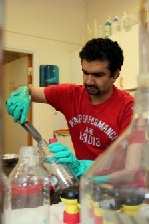 Researchers at a Swedish university might have come up with a way to turn ash from burned garbage into hydrogen. Lund University reports a scientist there has a thesis that says the process could produce 20 billion litres of hydrogen gas a year, enough to power 11,000 homes.
Researchers at a Swedish university might have come up with a way to turn ash from burned garbage into hydrogen. Lund University reports a scientist there has a thesis that says the process could produce 20 billion litres of hydrogen gas a year, enough to power 11,000 homes.
“The ash can be used as a resource through recovery of hydrogen gas instead of being allowed to be released into the air as at present. Our ash deposits are like a goldmine”, said Aamir Ilyas, Doctor of Water Resources Engineering at Lund University and the developer of the technique. Refuse incineration is a widespread practice in Europe.
The technique involves placing the ash in an oxygen-free environment. The ash is dampened with water, whereupon it forms hydrogen gas. The gas is sucked up through pipes and stored in tanks.
It is the heavy, grit-like bottom ash that is used. In combustion, a lighter fly ash is also formed. The bottom ash remains in quarantine, in the open air, at the site for up to six months to prevent leaching of environmentally harmful metals and the risk of hydrogen gas being formed, since accumulation of hydrogen during indoor storage can result in explosion.
Ilyas adds this will keep a lot of ash out of landfills.

